Bill McKibben's Brash One-Man-Stand Against Exxon and Climate Change
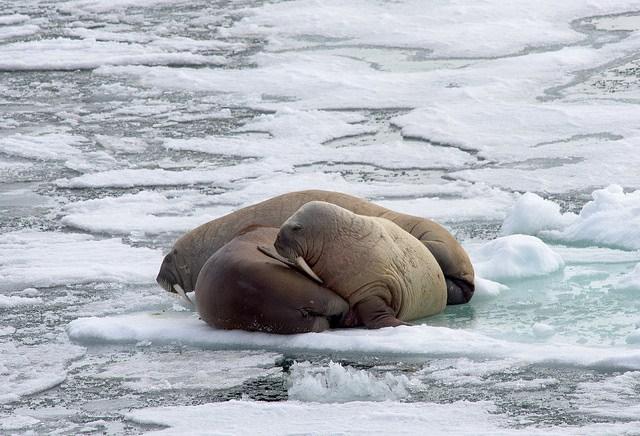

Getting the environmental message out there can be tough these days. The media spotlight can be hard to grab, particularly when the message has to do with a major corporations' alleged long-term avoidance of an issue that directly ties into climate change. So often, journalists go for the flashy banners -- the time-sensitive breaking news that they think readers want to see -- rather than reporting on something we've inherently known for years. Such is the story of advancing climate change.
But last Thursday, Bill McKibben found a way to turn that around. It was an artful, if not simple, co-opt of major media -- and a skillful demonstration of something he has been saying to audiences repeatedly recently: Get arrested and speak out.
Last year the CEO of 350.org phrased his message a little differently as he stood before a gathering of wine-sipping Seattlites who had come to hear him speak on the dilemma of Keystone XL: Don't be afraid to get arrested, but wear a suit. Challenge normal perception of what a person who cares about the planet looks and sounds like. Take part in what he calls the "collaboration with the rest of the world to stop climate change in its tracks."
It's not an unfamiliar tenor for McKibben, whose 2013 arrest in front of the White House helped shine a light on public objection to the Keystone XL pipeline project. It also set a benchmark for hundreds of students and thousands of protesters at a Washington, D.C. event a year later.
But this year, the issue isn't as physically evident as a pipeline that was due to cut a swath through some of North America's most environmentally sensitive lands. It's something more nebulous than that, but just as pressing: a corporation's blatant disregard for actions that it knew could herald irreversible climate change.
"ExxonMobil could have changed history for the better. Had it sounded the alarm — had it merely said ‘our internal research shows the world’s scientists are right’ — it would have saved a quarter century of wheel-spinning," wrote McKibben as he sat in front of an Exxon gas station in Burlington, Vermont, waiting to be arrested.
His protest worked. Since McKibben's arrest, social media has had a field day. Dozens of publications have covered the story about the environmental writer-turned-activist who, with the moxie of an entire gathering, staged a one-man protest outside a gas station and reminded the world of the story. And within minutes, months-old news that was already being relegated to the back pages suddenly inspired a reason for outrage .
And the outrage is still making its way to print. Lawmakers, including presidential candidate Sen. Bernie Sanders (D-Vt.) and Rep. Ted Lieu (D-Calif.), are calling for a Justice Department investigation into ExxonMobil's prior knowledge that its actions would increase global warming -- while maintaining its assertion that there was no such thing as climate change.
So far, no one has asked why lawmakers didn't propose the investigation earlier this year when the story first began to break. But perhaps that just goes to show the foresight of McKibben's plan: It not only moved the press, but also inspired the country's congressional leaders to speak up.
McKibben's "silly" one-man-stand is, among other things, a masterful lesson to future generations of how big-media priorities work -- and how environmental activism succeeds. It's anyone's guess, however, how well we as a global population with a looming environmental crisis will heed the message.
Images: 1) Michael Elleray; 2) LinhDo; 3) Christopher Michel
A First: Virginia Regulators Want Competitive Bids on Solar
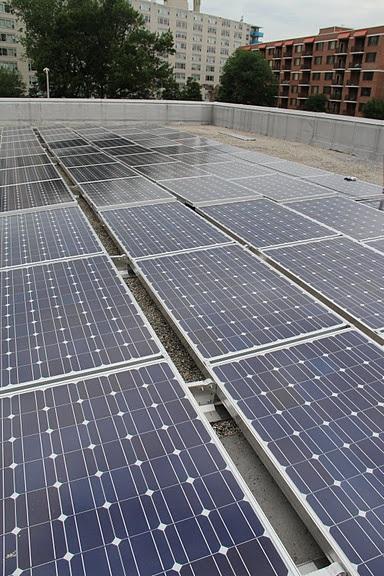

In a closely-watched order, the Virginia State Corporation Commission rejected Dominion Virginia Power’s proposal to build, on its own, the first large-scale solar energy facility in its monopoly service territory. The commission ruled the utility must seek third-party alternatives and ordered it to request bids.
In its initial proposal, Dominion stated it would build a 20 megawatt facility near Remington, Virginia, at a cost of $2,350 per kilowatt with an average operating time of 22 percent. A new state law requires Dominion to provide evidence about whether lower-cost alternatives exist. Seeing none, the commissioners voted to issue the order, making it public earlier this week.
The order expressly leaves open the possibility that, if selected, a third party could own a system and sell the power to Dominion. That would be a first in Virginia.
During recent legislative sessions, solar energy companies and clean energy advocates have appealed to state lawmakers for the opportunity to compete to build solar projects in Virginia. State law now gives them that chance.
“The comparatively high cost to consumers and low capacity factor (operating time),” the SCC wrote, “underscore that serious and credible efforts, as required by the General Assembly, must be made to determine whether lower-cost alternatives for obtaining renewable power are available in the market from third parties.”
The commission’s order further stated it was not be in the public interest for Dominion to build solar projects “at any price, no matter how burdensome to consumers.”
“We are disappointed in this setback in our efforts to add renewable energy,” Dominion said in a statement. “We are evaluating our options regarding this project.”
Dominion pledged to build 56 megawatts of solar capacity in the Commonwealth by year-end 2016 and a total of 500 megawatts by 2020. The 20-megawatt Remington project would provide enough power for roughly 5,000 homes at peak generation.
In written testimony filed in June, Francis Hodsoll, who leads the Virginia Chapter of the regional solar energy industries association, stated: “Only competitive transparent procurement processes can determine whether [Dominion] received the most competitive capital costs.” The market for solar, he added, “is very competitive” and “should provide lower cost electricity than the [Dominion] monopoly.”
A key issue is the ability of third-party projects to draw on financing, with tax incentives, that can make third-party solar less expensive than what Dominion wants to charge and recover in its rates.
In summarizing testimony given during a hearing this past summer, Hodsoll wrote: “The competitive market has a lower cost of financing, lower overhead costs, and can more efficiently pass through the tax benefits to the electricity consumer. Further, Dominion’s failure to deploy any significant amounts of solar despite years of trying harms Virginia’s electricity customers by squandering federal support set to expire at the end of 2016. Finally, Dominion’s approach places unnecessary performance and market price risks on their customers.”
Dominion still has the option to pursue the Remington project on its own. But its proposal will now have to beat any responses by third parties as measured by the system’s cost and operating time. Whether a solar developer can offer a better combination of the two in a state without a renewable energy requirement and companion renewable energy credits, nor net-metering credits on large solar system, remains to be seen.
Image credit: Flickr/Arlington County
Despite Voting No On Parental-Leave, Ryan Pleads for Family Time
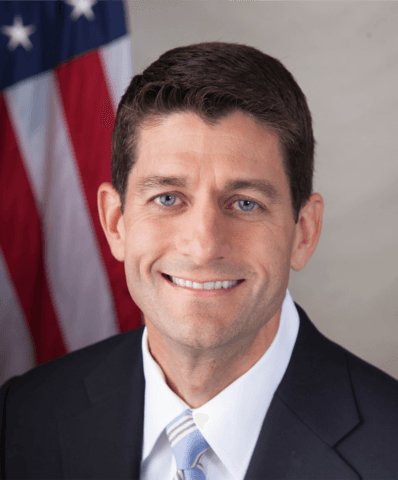

U.S. Rep. Paul Ryan (R-Wis.) announced on Tuesday night that he will run for Speaker of the House, but only under certain conditions. One of those conditions, he told his fellow Republicans, is that he be allowed to spend more time with his family. “I cannot and will not give up my family time,” he said following the meeting.
It’s great that Ryan wants to spend time with his wife and three children. He doesn’t want time with his family to be sacrificed to the demanding job, should he be the one to follow in current Speaker John Boehner's footsteps. However, his track-record concerning childcare legislation and subsidies shows he has one standard for himself and another for average Americans.
First, there is Ryan’s no-vote on the Federal Employees Paid Parental Leave Act (H.R. 626) in 2009. The act, which passed, allows federal employees to substitute any paid parental leave available for any leave without pay for either a child’s birth or adoption/foster care placement.
Second, there was Ryan’s budget proposal for 2015 through 2024 that proposed eliminating over $16 billion from the Social Services Block Grant (SSBG), which the Center on Budget and Policy Priorities describes as distributing funds to state human services departments. States use the grant for a variety of services including childcare subsidies for working poor families.
The abysmal state of U.S. childcare
Bryce Covert of ThinkProgress points out: “Ryan is fortunate to have a job where he has the power to demand time to go home and be with his children. But for the rest of the country, no one is guaranteed paid time off for illness, holidays, vacation, or the arrival of a new child.” Indeed, the state of childcare in the U.S. is a rather abysmal one.A 2007 study by the U.S. Department of Health and Human Service’s National Institute of Child Health Development found that most childcare facilities surveyed were “fair” or “poor,” and only 10 percent of them were ranked as high-quality. An InterNations guide on childcare for people moving to the U.S. cautioned that “U.S. child care can be very costly.” The guide pointed out that “U.S. childcare is not financed or provided for by the state,” in contrast to most other developed countries.
A 2013 expose by the New Republic on U.S. childcare observed: “American day care is a mess.” It noted that about 8.2 million kids, 40 percent of them being under 5 years old, “spend at least part of their week in the care of somebody other than a parent.” The article points out that in other countries “such services are subsidized and well-regulated.” The expose’s most searing indictment of the state of U.S. childcare is that its “overall quality is wildly uneven and barely monitored, and at the lower end, it’s Dickensian.”
Helping the most vulnerable in society
Ryan is vocal about his Christian faith and being a devout Catholic. In 2012, while campaigning for his running mate, Mitt Romney, he stated, “I am a Catholic, not because anyone has ordered me to accept a creed, but because of the grace and truth revealed in my faith.”That same year, he spoke again about his faith during an interview with the Brody File, where he said that his faith helped him create his federal budget proposal. “A person’s faith is central to how they conduct themselves in public and in private," he said.
Perhaps Ryan needs to re-read a New Testament verse (James 1:27), which states that “pure and undefiled religion in the sight of our God and Father is this: to visit orphans and widows in their distress.” In the ancient world, orphans and widows were the most vulnerable. In our society, financially struggling parents -- particularly single mothers -- are among the most vulnerable. Making it easier for families to afford and find quality childcare plus have paid parental leave are two ways to apply this ancient text to our present-day world.
Why doesn’t Paul Ryan think struggling families deserve the same access to family time that he is demanding? Why can't he apply his Christian faith to help American families?
Image credit: Wikimedia Commons
The Federal Reserve’s Role in Saving the Planet


By Joseph Plummer
Climate change is perhaps the most significant case of unmitigated externalities in an economy in the history of mankind. We have a market that is somewhat regulated. But for the most part, the external costs associated with producing greenhouse gases are not accounted for in any part of our economy. In other words, even though greenhouse gases are causing significant damage to the environment, no one is being compensated. This makes sense, because no one owns the atmosphere or the ocean or the air or entire ecosystems. Who would you compensate?
There is a legitimate argument to be made for polluters to pay some sort of carbon tax that would effectively reduce the impacts of greenhouse gases by making it more costly to emit them. Also, the revenue from the carbon taxes would at least partially fund mitigation efforts. But carbon taxes really wouldn’t solve the problem. Polluters would continue to pollute, and mitigation efforts would only make things less bad and not better.
Another legitimate argument is just to regulate the market in such a way that it is very difficult to produce greenhouse gases. This is a very costly method, because it relies on companies and individuals being able to adhere to such regulations. This would mean companies and individuals must make changes to follow the law, at their own expense, and would most definitely have significant slowing effect on the economy. Money diverted to adhering to government regulations is money that isn’t being spent on other things. Also, the cost of regulating effectively would be significant, as greenhouse gas emissions come from every facet of our economy.
So, if we accept the facts that carbon taxes will be ineffective and carbon regulation will be extremely costly, then what options are we left with? How do we halt greenhouse gas emissions in a timely manner without slamming on the brakes of our economy?
As it turns out, this is an easy problem to solve that doesn’t require action by Congress or the president. Basically, we need money to address climate change, and we don’t want to take money from economic progress or other current public initiatives. Consider that constraint for a moment. How can a society transition to a carbon-free economy in a timely manner without using tax revenue and without excess burden on individuals and businesses? We need more money.
The current definitions and constructs related to money demand are obsolete. These definitions and constructs were developed before the Information Age, before the interstate highway system, before we landed on the moon, and before climate change. It is time to include climate change (and other externalities) in our understanding of money demand.
The Federal Reserve is an independent government entity, and all of its monetary policy decisions can be made without approval from the president or Congress. So, that’s kind of amazing. The Federal Reserve can inject money whenever it decides it is necessary without getting approval from Congress or the president or anyone else for that matter. So, how do you convince the Federal Reserve Board to inject more money into the economy?
The Federal Reserve has a very clear mission that includes three basic objectives: maximize employment, keep prices stable and keep interest rates reasonable. The Federal Reserve is also responsible for “containing systemic risk that may arise in financial markets."
Given the objectives mentioned, take a moment to strategize on how you might convince the Federal Reserve to take a more active role in addressing climate change. Note: We don’t have to convince the Fed to inject capital into the economy for the purposes of addressing climate change. We need to convince them that if they don’t inject capital to address climate change, then prices will become unstable, unemployment will increase, and systemic risks will arise in financial markets around the world. This is an easy argument to make.
As global sustainability leaders develop and consider macro-level solutions to climate change, they should keep in mind the unique power that central banks have. Furthermore, in the case of the Federal Reserve, we don’t need to worry about the combative relationship between Congress and the president. The Federal Reserve might be the only player in this global game of chicken that can act swiftly enough to address the massive global problem that is climate change.
Image credit: Wikimedia Commons
Joseph Plummer is a degree candidate in the Executive Master of Natural Resources (XMNR) program at Virginia Tech, expecting to graduate in May 2016.
Responsible Supply Chains: Take Action and Follow Through


By Pierre-Louis Frouein
Getting serious about supply chain engagement requires us to do more than just set rules and expect suppliers to follow them. It's not enough to just sign agreements and hire third-party inspectors, though that’s a critical element.
There are three big things any company that's serious about ensuring sustainability and social responsibility in the supply chain must do. They involve getting proactive to do as much as possible to anticipate which suppliers warrant special scrutiny, a willingness to work with them individually both as partner and monitor, and getting inside their operations to get a first-hand look at what's going on.
Five years ago my company, Alcatel-Lucent, made the decision to take our supply chain work from a compliance-oriented effort to an action-oriented one. We built programs to help suppliers set individual goals, to provide support and guidance, and to keep everyone accountable.
The result of that effort: In the last five years, we’ve seen a 50 percent increase in supplier sustainability performance.
Throughout the process, we discovered three key components that can help any company to step up its supply chain work. These three components comprise the three building blocks that move supply chain sustainability from concept and good intentions to action: policy, implementation and success measurement.
1. Set clear goals, then perform indisputable assessments
Any company starting to address supply chain sustainability should begin by surveying its suppliers with a state-of-the-art assessment using well-recognized references. We use EcoVadis, which helps to establish which health, safety, environment, ethics and labor policies and programs are in place, and which ones are lacking.
But assessments alone won’t change behavior. Purchasers must work with suppliers to set goals and communicate the importance of meeting those goals. If suppliers think you’re not serious about achieving goals, they won’t take it seriously. Our production suppliers are aware they cannot remain ‘preferred’ and get more business if they do not meet our sustainability expectations.
It’s important to know the limitations of such third-party assessments. They can provide an excellent snapshot of your supply chain, to know which suppliers need the most help, and they can provide a high-level view of the health and well-being of your supply chain. But they also largely focus on policies and systems, which can sometimes be misleading. For example, a company can have a policy limiting the number of hours employees can work per week, but if that policy isn’t enforced, you wouldn’t know without being on the ground.
That's the place to start with suppliers, necessary but far from sufficient and well short of leadership and deep results.
2. Co-create individualized improvement plans and provide support
Measurement, demands and agreements are not enough. You have to follow through and help suppliers meet demands and keep agreements. You have to recognize that the kind of help suppliers need varies, and be willing to give tailored support. This converts concepts to action.
The typical model is mass training programs in which dozens or hundreds of suppliers can be helped at once. We learned early on that one-size-fits-all trainings would not work. Suppliers have varying needs and group trainings leave gaps that go unaddressed: a software company shares few sustainability problems with a metallic parts manufacturer, but we have both in our supply chain. In addition, companies vary in what they address easily, where they struggle, and, sometimes, in what they try to ignore or hide.
You have to see suppliers as individuals and work with them accordingly. We started holding one-on-one calls with suppliers—over 200 in total—in order to build out individualized improvement plans. This is for monitoring, yes, but it's also for identifying how we can help and how suppliers can help each other.
One-on-one consultations may not be the right solution for every company, but when working with high-risk suppliers in developing countries, we found it invaluable to moving the needle. Standing back and making demands would never be enough. So we find out who we should be concerned about, then develop individualized improvement plans, individualized support, and individualized monitoring.
Once the supplier has completed the improvement plan, we do an EcoVadis reassessment to ensure the company now meets our expectations.
3. Take initiative and get to the front lines yourself
Individualized improvement plans, support, and check-in teleconferences are game-changers, but they also have limitations. So, companies have to go on-site to their suppliers and check things out in person. Use outside audits, remote communications, and/or other risk factors as tools to figure out where there are or may be trouble in the supply chain -- especially scrutinizing the greatest threats to health, environment and human rights.
Then go in-person and see what's going on: Is the emergency exit door truly unlocked? Go find out in person. And if it’s not, fix it on the spot. Hold people accountable right then and there, and keep the offending supplier under close supervision. There's no substitute for getting onto the front lines.
In a recent audit, we found out workers in the production area of one supplier did not have appropriate personal protective equipment (gloves, protection glasses, etc). We instructed the supplier to create a list of rules defining what protection should be worn in each workplace, to make that list available for workers to read at the workplaces, and to instruct their staff to properly implement them. And we keep an eye on whether it's happening.
It’s not financially viable to audit every supplier every year. We conduct around 50 on-site audits annually, which means we need to be strategic. We use several key indicators to determine which suppliers will get audited.
- High-risk activities: We’re not likely to audit a consulting firm or software company. We’re going to focus on suppliers with the highest-risk labour, health, safety and environment profiles, like mechanical parts suppliers.
- Location: Suppliers in China are going to get more scrutiny from us than those from, say, Switzerland.
- Business load: We also look at the volume of business we do with a supplier—and focus on the ones we do more business with.
- Assessment results: Once we’ve done EcoVadis assessments, we focus on auditing suppliers with poor scores.
Supply chain sustainability expectations are changing and there’s more pressure on purchasers to take action and support their suppliers, rather than just sign agreements. It’s no longer enough to simply require compliance—purchasers can and should be ready to roll up their shirtsleeves and provide support. It’s the only way we can ensure that health, labour and environmental disasters are a thing of a past.
Image credit: Pixabay
Pierre-Louis Frouein manages sustainability aspects of Alcatel-Lucent’s global procurement group. He has previously been in charge of special environmental projects within the group, and has been active in industry associations concerned with sustainability in supply chains.
Nissan and Ecotricity call for charging point road signs


Nissan, manufacturer of the world’s best-selling electric vehicle (EV), the Nissan LEAF, and Ecotricity, which operates Europe’s biggest and most comprehensive rapid charging network, the Electric Highway, have called on the UK government to introduce official road signage for the UK’s growing number of standard and rapid EV charging points.
Despite there being more than 9,000 EV charging points nationwide, there is still no official, recognisable signage available to direct motorists to them.
The campaign will be calling on key influencers in the motoring and sustainability sector to share their views on the UK’s electric vehicle charging network in order to encourage the Department for Transport and Office for Low Emission Vehicles to take action.
Speaking at the campaign launch, Ecotricity founder Dale Vince said: “Both the cars and the infrastructure are in place to support the electric car revolution in Britain – there are Electric Highway pumps at almost every motorway services, while companies like Nissan are developing top quality electric cars.
“It’s time to introduce charging point road signs in Britain – they’ll provide necessary direction for the thousands of electric car drivers in Britain as well as increasing public awareness that the infrastructure is ready for them to make the move to an electric car. ?Over the past four years, we’ve installed Europe’s most advanced electric car charging network right here in Britain – it has 250 pumps, 20,000 members and over 10 million emission free miles driven since its inception.
“The growth so far in 2015 has been phenomenal – over a million miles driven on the network every month. The argument for road signs could not be stronger.”
Why Food Waste is an Urgent Global Problem
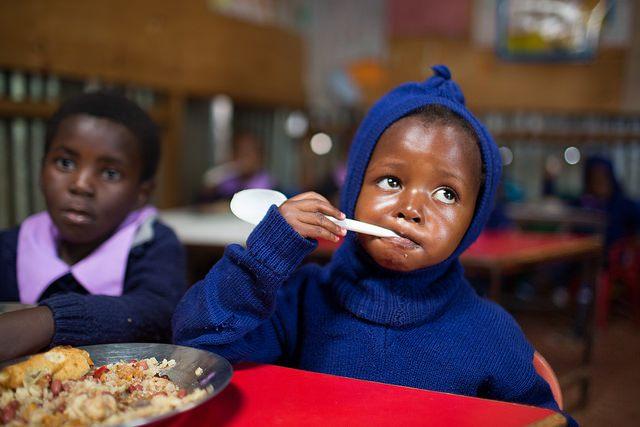

You've probably already heard the stats: 35 million tons of food goes to the landfill every year in the United States. It's a staggering amount when you figure that food comprised more than 20 percent of our entire yearly waste stream in 2013. Put another way: On average, every family in the nation loses $1,600 to $2,000 each year to food that is purchased but not eaten. That loss is more than what it costs to feed a family of four for an entire month.
For the business sector, that economic impact is even more staggering, says Mathy Stanislaus, assistant administrator to the Environmental Protection Agency's Office of Solid Waste and Emergency Response.
"The business sector throws away about $161 billion of food," Stanislaus told TriplePundit. That may be in the form of blemished produce, stale packaged goods or products that aren't deemed sellable in the retail market due to expired sell-by dates. Or it may occur in the restaurant sector, where discarded food occurs every day due to overproduction, incorrect preparation, or simple decisions by consumers who order too much and chose to leave the food at the table. According to a 2005 study by University of Arizona researchers, almost 10 percent of the food purchased by fast-food restaurants isn't consumed.
These losses pose a huge economic burden on our communities, but they also present significant social challenges. “We have roughly 1 in 6 Americans who go hungry for part of the year,” Stanislaus said.
But while we often think of food loss in the context of what gets wasted in garbage dumps and sewage systems, the implications are even more pressing when we consider the latest research on climate change, which is being propelled in part by methane emissions from the earth.
Roughly 18 percent of the gasses generated in the U.S. come from public and private landfills. Decaying food, Stanislaus noted, "is probably the single largest source of materials in the landfills that create methane." And that naturally occurring gas is "one of the strongest greenhouse gases there are, a significant impact from an environmental consequence."
This triad of challenges -- the social, economic and environmental impacts of food waste -- has made stemming the food drain an urgent issue for global communities. Because the impacts we experience here in the U.S. are, in many cases, far worse in countries where accessing enough food and financial resources can be an almost insurmountable problem.
In May, the G20 categorized food waste as "a global problem of enormous economic, environmental and societal significance" that is adding to other challenges of a burgeoning, technologically-developing world. Food waste has negative consequences for "food security, nutrition, use of natural resources and the environment," G20 members concluded.
Farming and production issues, said the G20, are undermined even further by food security problems and the growing risks of climate change. While food availability has increased by 40 percent since 1945, "input-intensive farming [to keep up with commercial food demands] has also contributed to soil degradation, water pollution and loss of biodiversity." This cyclical problem puts further strain on the ecology, while doing little to ensure that poorer communities have adequate food.
"There is also an issue of inadequate distribution and access, which is the main cause of hunger today," the G20 ministers summarized.
And that inadequacy of distribution and access ties back to the EPA's efforts to stem food waste here in the U.S. The EPA's Food Recovery Challenge not only encourages businesses to reduce food waste, but it also gives them the tools to track food use and redirect consumables that might otherwise end up in the bin.
"[We] work with about 800 businesses and organizations [that] commit to ordering and tracking their food purchasing, their food managing processes," Stanislaus explained. The process has been an eye-opener for many companies that have come up with new ways to stem many of those losses. It's also been a benefit to local food banks, which often depend on donations to exist.
"Businesses have been able to divert about 606,000 tons of food from entering our landfills and about 88,000 tons of that was diverted to food banks to feed the hungry," Stanislaus told us.
The key to stemming the world's food drain is, at least in part, education: Teaching consumers as well as businesses how to purchase food smartly, track their usage, and redirect those sources that can't be sold or put on the table for whatever reason, Stanislaus said.
Indirectly, better food management not only ensures less wasted food, but also better farming practices that are tailored to sustainable needs rather than commercial, preferential demand and production.
Last month, the EPA and U.S. Department of Agriculture announced a new food-reduction goal: to cut the country's food waste 50 percent by 2030. With 80 percent of the nation's fresh-water use and 10 percent of its energy dedicated to growing and sustaining food sources (crops as well as livestock), the goal addresses many challenges that the United States is due to face in coming years, including the factors that feed climate change. And, as with many issues these days, education seems to be at the heart of how we create and maintain a sustainable and well-nourished nation.
.
Images: 1) Feed My Starving Children; 2) M01229; 3) State Farm; 4) USDA
Victory in the Arctic: Obama Cancels Lease Sales
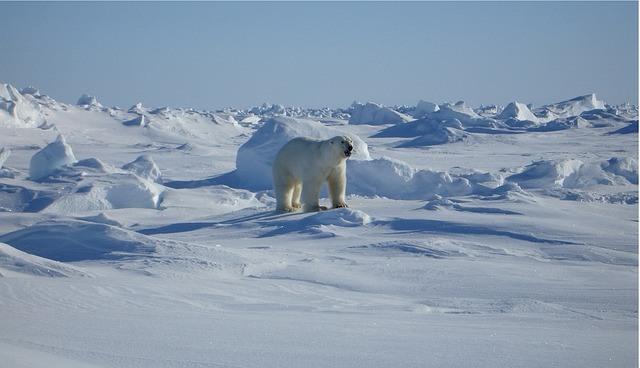

A few months ago, it seemed inevitable that this would be the year the world's most pristine oceans were damaged by drilling. Today, after a massive, months-long grassroots and social media mobilization, the Arctic will be preserved, from now to the foreseeable future.
That is right. President Barack Obama just canceled leases for Arctic drilling for the next two years, after Shell announced it would give up exploring for oil in its lease a few weeks ago.
“In light of Shell’s announcement, the amount of acreage already under lease and current market conditions, it does not make sense to prepare for lease sales in the Arctic in the next year and a half,” Interior Secretary Sally Jewell said in a statement Friday.
Arctic drilling is officially done. Environmental organizations hailed this as a major victory for the planet.
“The 'kayaktivists' and 'Shell no' movement showed that people-power can and will continue to overcome Big Oil. President Obama and Secretary Jewell’s decision should be lauded, as we continue to work towards protecting our wild places,” Sierra Club's executive director, Michael Brune, said in a statement.
This means the Arctic's fragile flora and fauna will not face the near-certainty of an oil spill, as the U.S. government's own projections forecast if drilling went ahead.
“Any spill in the Arctic would have devastating consequences for the region's fragile wildlife and ecosystems, and there is no technology in existence that could clean up a spill in the area's broken sea ice and frigid waters,” said Defenders of Wildlife executive vice president, Jamie Rappaport Clark.
This victory couldn't have happened without public support, and that is why Greenpeace – whose dramatic, rig-blocking kayak protest in Seattle and bridge-dangling in Portland helped raise awareness of Shell's intentions – pointed the cause at people-power.
“It's a huge victory for the millions of people who stood up against Shell and a disaster for other oil companies with interests in the region,” said Greenpeace International executive director, Kumi Naidoo, in a statement. “Shell has gambled big and lost big, both in terms of financial cost and its public reputation.”
Let us enjoy this, as this is good news for several reasons. Firstly, for global climate. Scientists say we need to keep at least 80 percent of all fossil fuels in the earth in order to avoid the worst of climate change. Not drilling in the Arctic will help us reach this figure – though now we need to keep the momentum up to ensure that more fossil fuels around the world are kept in the ground.
For the oil giant, this will end up being, as Naidoo noted, a massive, multibillion-dollar loss that will inhibit Shell's, and others, ability to explore for oil in the future. Other big oil companies should take note – it is no longer profitable to drill for oil. A global movement will oppose you at every turn and hold you accountable for your actions. And now, we know, no matter how many billions you throw at drilling and public relations, we can win.
The better business case? Clean energy. Clearer, and cleaner, than ever.
Image Source: Pixabay
Climate Leadership Index Selects Best Performing Companies


When you make a financial investment, you’re usually thinking about your own future, not the world’s. It’s a choice we’ve generally had to make in the name of looking after ourselves. That’s how it used to be, anyway. But, like many things, this too is changing.
Now you can look at companies through an objective lens that compares their climate impact relative to others in their same line of business. What you find are companies at the top of that list that are not only behaving responsibly, but are also consistently outperforming their peers when it comes to financial returns.
The lens is the recently launched the Etho Climate Leadership Index (video), developed by Etho Capital. We had the opportunity to speak with Etho founders Ian Monroe and Conor Platt on the day after the announcement. Platt explained how "the climate leadership process creates the underlying index."
“The index,” Monroe explained, “is a positive screen to select the best performing companies in all industries.”
This is based on data provided by Trucost, which is widely believed to be the most objective and reliable source of such data based on the Scope 1-3 emissions, as defined by the EPA. The metric used is actually the greenhouse gas (GHG) emissions divided by their market capitalization, which is taken to represent the company’s climate efficiency. To meet this threshold, a company must have an emissions profile that is 50 percent better than the average in its industry.
All of those in the index are selected through this process. Using a data-driven sustainability process can cut through corporate greenwashing that other sustainability rating systems miss. In a passing comment, Monroe noted that Volkswagen was eliminated from the climate leadership index based on high company-level greenhouse gas emissions relative to other automakers. Meanwhile, the Dow Jones Sustainability Index was giving Volkswagen an award for achievement at the same time that news was breaking about the company cheating on pollution tests.
Finally, certain companies are eliminated on an individual basis if they have been considered bad actors by those monitoring the industry in question. This includes certain companies in timber, mining, some consumer products and palm oil whose actions are judged to exclude them from being considered sustainability leaders.
The index was created looking back 10 years into the past. Based on market performance over that time period, the Climate Leadership Index outperforms the S&P 500, the most commonly known broad-market index, about 60 to 70 percent of the time. Etho Capital expects to launch some financial products, based on its index, in the form of exchange traded funds (ETFs) in the very near future.
This timely development should be most welcome by anyone concerned about climate change and sustainability who is in a position to invest. Of course the concept of socially responsible investing is not new. This index is more specific though and, Monroe explained, it’s “the only index that combines quantitative climate-efficiency data with a fossil-free and socially responsible approach to investing.”
S&P Dow Jones recently announced two funds: the S&P Global 1200 Carbon Efficient Index and the S&P Global 1200 Fossil Fuel Free Index, but the criteria, claims Monroe, is less rigorous than Etho Capital’s.
In the first case, emissions data is only used to re-weight sectors, “so you're still investing 6.4 percent of your money in energy (aka coal, oil and gas). So, the index is not fossil free.” In the second case, companies are fossil fuel free, but there is no carbon efficiency data used, which has been shown to provide superior results. There is also not, in either case, additional screens provided for social responsibility.
"What S&P is doing is a nice start, but most sustainable investors will still be a bit disgusted when they dive deeper into what their indexes actually contain," Monroe said. "What Etho is providing is an index solution that a socially responsible investor can fully dissect, and feel good about what they find.”
Image credit: Pixabay
Saving Basmati and Other Endangered Grains


If you think you're buying basmati rice, think again. "Most of the rice sold as basmati in the United States is not the traditional variety," said Caryl Levine, co-owner of Lotus Foods, which recently announced a plan to import organic, heirloom basmati to promote rice biodiversity.
"Americans get hybrids, like U.S.-produced Texmati, which grow faster and can have higher yields. But hybrids don't have the traits rice connoisseurs look for,” Levine explained. Dehradun basmati is among a handful of varieties in India and Pakistan that are recognized as authentic basmati rice. “It has extra long grains that almost double in length when you cook them, and it is wonderfully aromatic," Levine said. The word "basmati" comes from the Sanskrit word for "fragrant."
Dehradun is the capital city of Uttarakhand, an Indian state in the foothills of the Himalayas. Rice cultivation there is centered in the Doon Valley, between the Ganges and Yamuna Rivers, where the traditional variety is being edged out as fields become suburbs and farmers are encouraged to switch to hybrids. Lotus Foods is partnering with Nature BioFoods, an all-organic subsidiary of the multinational LT Foods, to bring organic, fair trade-certified Dehradun basmati to the U.S. market as a premium product, so that farmers will benefit from those premiums.
"Agribusiness only makes a few varieties of rice available, but much more is out there," said Lotus co-owner Ken Lee. "Our business is trying to share and protect the diversity of rice."
Dehradooni farmers are generating surpluses to sell because they are using System of Rice Intensification (SRI) practices, which involve simple methods and organic matter to conserve the use of water and seedlings. Farmers who switch from traditional methods to SRI usually reduce their labor and materials costs, while research shows that their yields can more than double.
Lotus is now introducing Dehradun basmati in bulk to the natural foods and foodservice trade. The product launch coincides with the company’s campaign, which has a lengthy name befitting its multiple goals: “Do the Rice Thing with More Crop Per Drop, a Water-Smart and Women-Strong Way to Grow Rice."
Lotus learned about SRI a decade ago from Olivia Vent at Cornell University's SRI Rice project, which offers technical assistance to farmers. Vent said that by demanding less labor, SRI improves the lives of women in South Asian villages. The women work extremely long hours, she explained, and tending rice paddies is just one of their jobs.
Levine and Lee visited SRI growers in Madagascar and Cambodia, "and those trips convinced us that this was the right thing to do," Lee recalled. "By creating market incentives, we can move the needle in a positive direction on multiple fronts -- using less water, helping farmers, helping women and giving consumers better choices."
The alliance between Lotus Foods and SRI Cornell "is turning out to be a great partnership," Lee said. Lotus now sells four varieties of SRI or More Crop Per Drop rice; Dehradun basmati will make five. "It's exciting," he said. "We meet store owners and tell them, they tell their staff, and the staff gets the customers on board. Everyone wants solutions, and this rice offers several of them."
Image credit: Flickr/Connie Ma